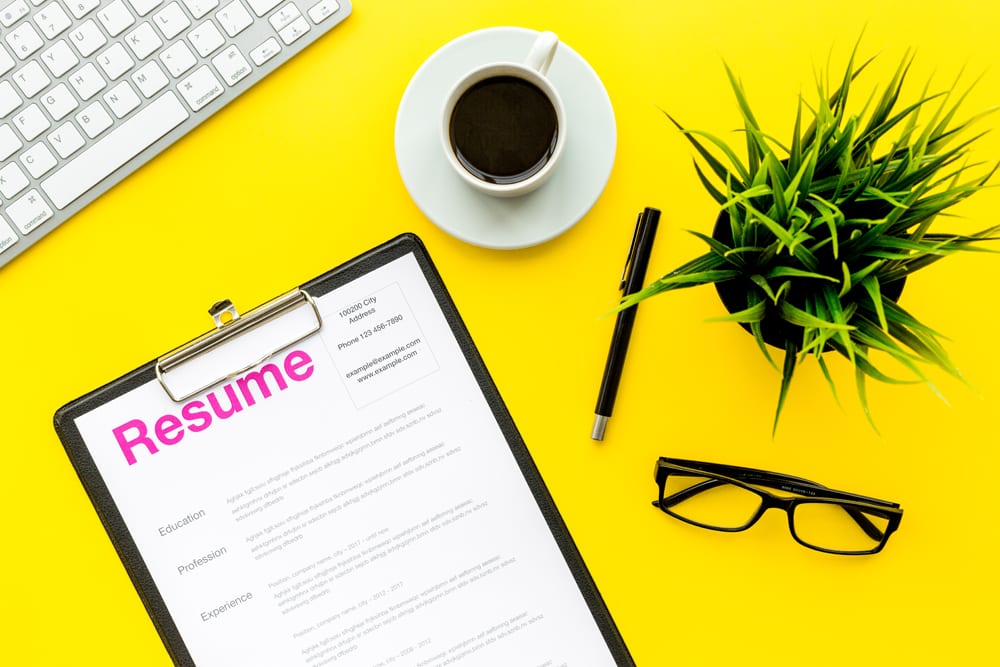
Writing the perfect resume is one of the toughest parts of job-hunting, and also one of the most important. If the gruelling odds of success are making your job prospects seem as sad as your blank resume, don’t worry. Even if you have little or no work experience, knowing how to draw on relevant skills and a clearly set out resume will help you to sell yourself effectively. Here’s how to impress a recruiter in six seconds flat.
Resume Format
If your recent nightmares consist of being stared at by a blank page, there are plenty of resume templates available online that can help you get started. Remember to list your experience in reverse-chronological order and choose a format that plays to your strengths. If you have less work experience, you may want to feature your education first. If you’ve been exploring the industry during college, you could highlight a separate section about your relevant or professional experience.
Unfortunately, the design of your resume is important, too—hiring managers may have to read thousands of applications and they won’t appreciate the extra work if your information isn’t clearly set out on the page.
Design rules:
- Aim for one page, but if you have information that is highly relevant, add a page instead of compromising on a clear layout.
- Choose an easy-to-read font and keep this consistent.
- On average, hiring managers spend just six seconds considering a resume before deciding whether to dismiss it.
- Use a variation of font sizes (make headers and your name larger).
- When choosing a font size, many resumes follow a 24, 12, 10 format—the name is 24pt, the body headers are 12pt, and the bullet points are 10pt.
- Create white space by breaking up text with paragraphs or lines.
- Never set margins below .5—if you lack experience, stick to one inch margins.
- Focus on readability
Profile summary
Including a brief profile summary or statement at the top of your resume can be a great way to attract attention and show the employer, at a glance, why you’re qualified for the job.
E.g. “Self-motivated and adaptable business graduate with proven experience in business, marketing, sales and communication.”
Education
With entry-level applications, graduates benefit from emphasizing the education section on their resume. Include the names of institutions, their location, the date of graduation and your degree. Only include your GPA if it is above average. You may also wish to mention your thesis or the most relevant courses that you took.
Work experience
Yes, getting professional work experience whilst you study greatly helps to differentiate your application from your competitors’. If this isn’t you though, don’t panic—you may have more experience than you think. Part-time jobs, volunteer work, summer internships and college clubs will all work to embellish your resume. Include the company’s name, location, your title and the dates of employment (month and year). Use around three to five bullet points per experience to cover your main duties and achievements.
Additional sections
While education and experience are necessary to a resume, adding additional sections can help to strengthen it. Examples include: skills, interests, certificates, publications and languages.
Perhaps most important here is a skills section that features soft and hard skills. Soft skills include attention to detail, teamwork, critical thinking, etc. Hard skills include technical expertise, foreign languages and SEO knowledge. Don’t try and save time here—each resume should be tailored to the individual job ad. Don’t list all of your hobbies, unless they’re relevant—you’ll need things to discuss in the interview.
Tips to make your resume stand out!
Statistics are your best friends—exactly how many followers did you attract to social media pages? Even if a company doesn’t ask for a cover letter, you should almost always include one. Submit a separate document that highlights your strongest skills and qualifications or include it in the body of an email with your resume attached
Step-by-step resume checklist
- Decide on a resume template and make it readable.
- Make your contact information easy to find and use a professional email address.
- Write a brief profile summary that responds to what the company are looking for.
- Write your resume content—most relevant and most recent experience first.
- Check your skills clearly match those in the job ad.
- Check you use tailored keywords, quantification and action verbs
This article was originally published in the Spring 2019 of College News.
See also: Free Courses to Boost Your Skills Profile















